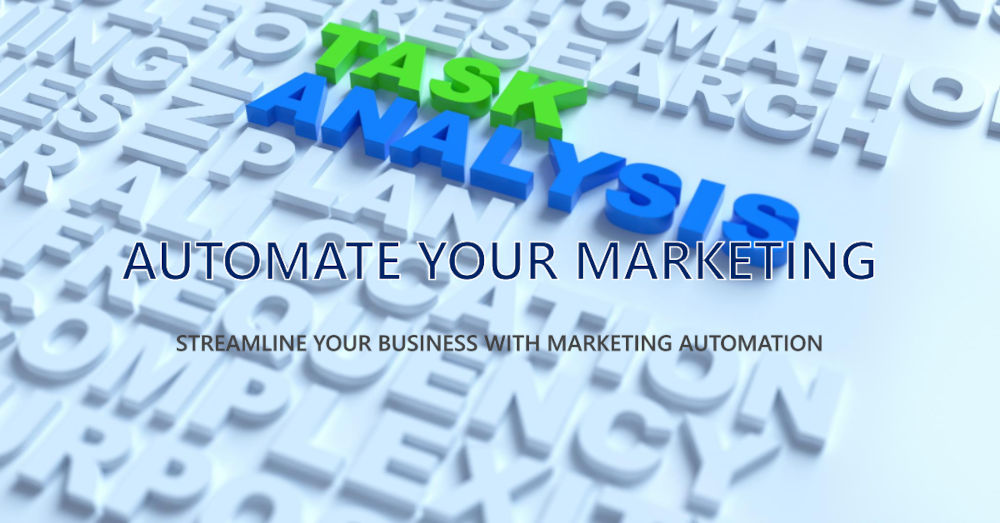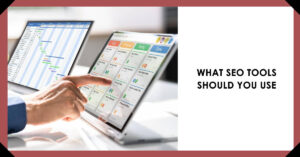In a world of fleeting attention spans, marketing has evolved, thanks to marketing automation—the driving force behind modern marketing’s success. Get ready for a cosmic journey through data, personalization, and efficiency. In this article, we’ll reveal the secrets of marketing automation, guiding you through its benefits and strategies. Join us on this cosmic voyage as we explore the universe of marketing automation!
Benefits of Marketing Automation

In the dynamic realm of modern marketing, embracing automation yields a treasure trove of advantages that can supercharge your marketing endeavors. In this section, we unveil the riches of integrating marketing automation into your strategy:
Time and Cost Efficiency
- Streamlined Repetitive Tasks: Bid farewell to the drudgery of manual, time-consuming chores like marketing email dispatches, list segmentation, and social media postings. The marketing process shoulders these burdens, liberating your team’s precious hours.
- Optimized Resource Allocation: Effectively channel your human resources towards high-impact creative tasks, strategic ideation, and insightful analysis, rather than squandering time on mundane repetitive marketing tasks.
Enhanced Lead Nurturing
- Personalized Engagement: Tailor your communications to individual leads based on their actions, preferences, and positions in the sales funnel. Nurture leads with timely, pertinent content, amplifying the odds of conversion.
- Lead Scoring Precision: Implement lead scoring models to pinpoint the most promising prospects, ensuring that your sales force targets its efforts efficiently.
Refined Customer Segmentation
- Laser-Focused Targeting: Segment your audience with surgical precision, based on demographics, behaviors, or other criteria. Serve highly targeted messages, striking chords with each segment and driving up engagement and conversion rates.
- Dynamic Content: Automatically adapt your content to match the tastes and interests of diverse segments, sculpting a personalized and magnetic user experience.
Amplified Revenue and ROI
- Elevated Conversion Rates: With improved lead nurturing and pinpointed segmentation, expect an uptick in conversion rates. Targeted and personalized messaging often leads to more successful conversions.
- Enhanced Marketing Accountability: Seamlessly trace and gauge the performance of your marketing endeavors. Comprehend what’s effective and what’s not, empowering you to distribute your budget more judiciously and amass a superior return on investment (ROI).
The benefits of using marketing automation aren’t merely about time saved, but it’s a potent tool that can metamorphose the efficacy and efficiency of your marketing crusades, ultimately propelling business growth and prosperity.
Getting Started with Marketing Automation

Getting started with marketing automation is an exciting step towards optimizing your marketing efforts and driving better results. In this section, we’ll guide you through the essential steps to embark on your marketing automation journey.
Assessing Your Marketing Needs
Before diving into the best marketing automation, it’s crucial to assess your specific marketing needs and objectives. Consider the following:
- Goals and Objectives: Define your marketing goals, whether it’s increasing lead generation (inbound marketing), improving customer retention, or boosting sales.
- Audience Segmentation: Identify your target audience and understand their preferences and pain points.
- Current Challenges: Recognize the marketing tasks that are time-consuming or resource-intensive.
Choosing the Right Marketing Automation Software
Selecting the top marketing automation tools is a pivotal decision that will impact your entire automation journey. Here’s how to make an informed choice:
- Research: Explore different marketing automation platforms and their features.
- Scalability: Choose a platform that can grow with your business.
- Integration: Ensure the software integrates seamlessly with your existing tools and systems.
- User-Friendly Interface: Opt for a user-friendly platform that suits your team’s expertise.
Setting Up Your Marketing Automation Platform
With the best marketing automation software in hand, it’s time to set up your marketing automation platform. Follow these steps:
- Onboarding: Familiarize yourself and your team with the software through training and onboarding sessions.
- Data Integration: Connect your CRM and other data sources to the automation platform.
- Segmentation: Create audience segments based on your assessment in step A.
- Content and Workflow Creation: Develop automated workflows and content templates.
By taking these initial steps, you’ll be well-prepared to harness the power of marketing automation for your business. The next sections will delve deeper into specific features and strategies for effective marketing automation.
Key Features of Marketing Automation Software

Marketing automation software is a powerful tool that comes equipped with a range of features to streamline and enhance your marketing efforts. In this section, we’ll explore the essential features that make marketing automation software indispensable:
Email Marketing Automation
Email marketing remains a cornerstone of digital marketing. Email automation software offers advanced capabilities, including:
- Email Campaigns: Easily create, schedule, and send targeted email campaigns.
- Personalization: Tailor emails with dynamic content based on recipient behavior.
- Segmentation: Divide your email list into segments for precise targeting.
- Automated Follow-Ups: Set up automated drip campaigns and follow-ups.
Lead Scoring and Qualification
Identifying and prioritizing leads is vital for effective sales and marketing alignment. Marketing automation software provides:
- Lead Scoring: Assign scores to leads based on their engagement and behavior.
- Lead Qualification: Automatically route qualified leads to the sales team.
- Behavior Tracking: Monitor how leads interact with your content and website.
Workflow Automation
Automation is at the core of marketing automation software. Key workflow features include:
- Automation Builder: Design and customize automated workflows visually.
- Triggers and Actions: Define triggers (e.g., form submissions) and corresponding actions (e.g., send email).
- Time-Based Campaigns: Schedule automated actions at specific times or intervals.
- Lead Nurturing: Create nurturing sequences to guide leads through the sales funnel.
Customer Relationship Management (CRM) Integration
Integration with your Customer Relationship Management (CRM) system is crucial for seamless data management and sales collaboration. Marketing automation software offers:
- Contact Sync: Automatically sync contact and lead data between systems.
- 360-Degree View: Access a comprehensive view of customer interactions.
- Sales Insights: Provide sales teams with lead engagement data for informed follow-ups.
- Closed-Loop Reporting: Track the full customer journey from lead to conversion.
These key features empower businesses to automate repetitive tasks, nurture leads effectively, and improve collaboration between sales and marketing teams. As we delve deeper into this guide, you’ll gain a comprehensive understanding of how to leverage these features to optimize your marketing automation strategy.
Creating Effective Marketing Automation Campaigns

Creating successful marketing campaigns requires a strategic approach that combines creativity, data-driven decisions, and precise execution. In this section, we’ll guide you through the steps to craft compelling and impactful automation campaigns.
Defining Your Target Audience
The foundation of any effective campaign lies in understanding your audience. Follow these steps to define your target audience:
- Buyer Personas: Create detailed buyer personas based on demographics, interests, pain points, and behavior.
- Segmentation: Use your marketing automation software to segment your audience into distinct groups.
- Behavioral Triggers: Identify specific actions or behaviors that trigger campaign interactions.
Developing Personalized Content
Personalization is a cornerstone of successful marketing automation. Here’s how to craft personalized content:
- Dynamic Content: Leverage dynamic content capabilities to tailor messages to each segment.
- Content Mapping: Align content with different stages of the buyer’s journey.
- A/B Testing: Experiment with different content variations to optimize engagement.
Setting Up Automation Workflows
Automation workflows are the heart of marketing automation campaigns. Follow these best practices:
- Visual Workflow Design: Use the automation builder to design intuitive workflows.
- Multi-Channel Engagement: Incorporate various channels like email, social media, and SMS.
- Lead Scoring Triggers: Set up triggers based on lead scores to determine the timing of interactions.
- Drip Campaigns: Create automated drip campaigns to nurture leads over time.
A/B Testing and Optimization
Continuous improvement is key to campaign success. Implement these strategies for optimization:
- A/B Testing: Test different elements, such as subject lines, content, and send times.
- Data Analysis: Regularly analyze campaign performance data to identify areas for improvement.
- Iterative Updates: Make data-driven adjustments to your campaigns for better results.
By following these steps, you can create marketing automation campaigns that engage your audience, nurture leads effectively, and drive conversions. The combination of audience insights, personalized content, automated workflows, and ongoing optimization will be instrumental in your campaign’s success.
Common Challenges in Marketing Automation

While marketing automation offers a multitude of benefits, it’s not without its challenges. Being aware of these common pitfalls will help you navigate the world of marketing automation more effectively and avoid potential setbacks.
Data Quality and Management
Effective marketing automation relies heavily on accurate and clean data. Challenges in this area include:
- Data Consistency: Ensuring that data from various sources is consistent and up-to-date.
- Data Integration: Integrating data from multiple systems and sources into your marketing automation platform.
- Data Privacy: Addressing data privacy concerns and complying with regulations like GDPR.
Over-Automation Pitfalls
Over-automation can lead to negative customer experiences and diminishing returns. Common issues include:
- Impersonal Communication: When automation becomes too rigid, it can result in generic, impersonal messaging.
- Frequency Overload: Bombarding leads with too many automated messages can lead to unsubscribes or disengagement.
- Lack of Human Touch: Over-reliance on automation can neglect the importance of human interaction in sales and marketing.
Ensuring Compliance and Privacy
With increasing regulations and concerns about data privacy, ensuring compliance is crucial. Challenges include:
- GDPR and Regulations: Staying compliant with data protection laws and regulations.
- Consent Management: Managing and tracking user consent for data processing.
- Data Security: Protecting sensitive customer data from breaches and cyberattacks.
Navigating these challenges in marketing automation requires a balance between automation and personalization, a strong focus on data quality and security, and a commitment to staying updated with evolving regulations.
In the next sections of this guide, we’ll explore strategies and best practices for addressing these challenges and maximizing the benefits of marketing automation.
Measuring and Analyzing Marketing Automation Performance

To ensure the success and efficiency of your marketing automation efforts, it’s imperative to have a robust measurement and analysis system in place. In this section, we’ll delve into the key aspects of measuring and analyzing marketing automation performance.
Key Performance Indicators (KPIs)
Defining and tracking KPIs is essential for evaluating the effectiveness of your marketing automation campaigns. Here are some crucial KPIs to monitor:
- Conversion Rates: Measure how effectively your campaigns turn leads into customers.
- Click-Through Rates (CTR): Track the percentage of recipients who click on your emails or campaign links.
- Open Rates: Monitor the percentage of recipients who open your emails.
- Lead Engagement Score: Assign scores to leads based on their interactions with your content.
- Return on Investment (ROI): Calculate the financial return on your automation efforts.
Tracking and Reporting
Accurate tracking and reporting tools are essential for collecting data and generating insights. Key elements include:
- Event Tracking: Monitor specific events, such as email opens, clicks, and form submissions.
- Goal Tracking: Set and track specific goals, such as lead conversions or revenue generated.
- Custom Reports: Create customized reports that provide a comprehensive view of campaign performance.
- Dashboard Views: Utilize dashboards to visualize real-time data and monitor trends.
Using Data to Improve Campaigns
Data-driven decision-making is the cornerstone of optimizing marketing automation campaigns. Strategies for using data effectively include:
- A/B Testing: Experiment with variations in content, and subject lines, and send times to determine what resonates best with your audience.
- Segmentation Refinement: Refine your audience segments based on engagement and conversion data.
- Content Personalization: Use data insights to personalize content and messaging for higher engagement.
- Iterative Improvements: Continuously adjust and optimize your automation workflows and content based on data findings.
By focusing on KPIs, leveraging tracking and reporting tools, and making data-driven adjustments, you can measure, analyze, and improve the performance of your marketing automation campaigns, ultimately driving better results and ROI.
Advanced Marketing Automation Strategies

As you become more proficient with marketing automation, you’ll have the opportunity to explore advanced strategies that can take your campaigns to the next level. In this section, we’ll dive into some advanced tactics and approaches to maximize the impact of your marketing automation efforts.
Marketing Automation for E-commerce
E-commerce businesses can leverage marketing automation to boost sales and customer loyalty:
- Cart Abandonment Campaigns: Automatically send reminders to customers who abandon their shopping carts.
- Product Recommendations: Use machine learning algorithms to suggest products based on customer behavior and preferences.
- Loyalty Programs: Implement automated loyalty programs that reward frequent shoppers.
Account-Based Marketing (ABM)
Account-based marketing is a targeted approach that’s highly effective in B2B contexts:
- Identifying Key Accounts: Use data and analytics to identify high-value accounts.
- Personalized Content: Craft personalized content and messages for each target account.
- Multi-Channel Engagement: Implement multi-channel campaigns tailored to each account’s needs and preferences.
Integrating AI and Machine Learning
Artificial Intelligence (AI) and machine learning can enhance your marketing automation capabilities:
- Predictive Analytics: Use predictive models to identify potential high-value leads.
- Chatbots and Virtual Assistants: Implement AI-powered chatbots for personalized customer interactions.
- Content Recommendations: Leverage machine learning algorithms to recommend content based on user behavior.
Hyper-Personalization
Going beyond basic personalization, hyper-personalization tailors content to an individual’s unique preferences and behaviors:
- Behavioral Tracking: Continuously monitor user behavior to provide real-time, contextually relevant content.
- Dynamic Content: Automatically adjust content elements such as images, headlines, and offers for each recipient.
- Predictive Personalization: Use data and AI to predict what a user might be interested in next.
Marketing Automation for Customer Retention
Marketing automation isn’t just for lead generation; it’s also invaluable for retaining existing customers:
- Customer Journey Automation: Create automated campaigns that nurture and engage existing customers.
- Feedback and Surveys: Use automation to collect customer feedback and insights.
- Cross-Selling and Upselling: Implement automated strategies to promote complementary products or upgrades.
By embracing these advanced marketing automation strategies, you can unlock new levels of personalization, efficiency, and effectiveness in your campaigns. These tactics are especially powerful when tailored to your specific industry and business goals.
Conclusion
In the fast-paced world of marketing, automation is your trusty sidekick, helping you conquer the digital frontier with finesse. From nailing down the basics to mastering advanced strategies, you’ve now got the tools to harness its power.
Remember, the pillars of data, personalization, and measurement are your North Star. Skills like content wizardry and tech-savvy will be your cape and sword.
So, does marketing automation really work? Absolutely! With creativity, diligence, and a touch of automation magic, you’re ready to slay the marketing dragon and emerge victorious. Go forth, marketing warrior, and may your ROI be ever in your favor!



